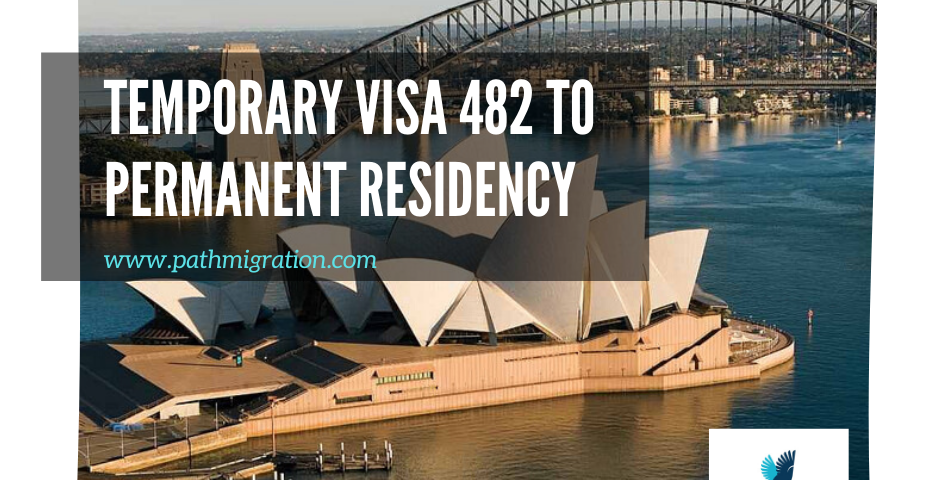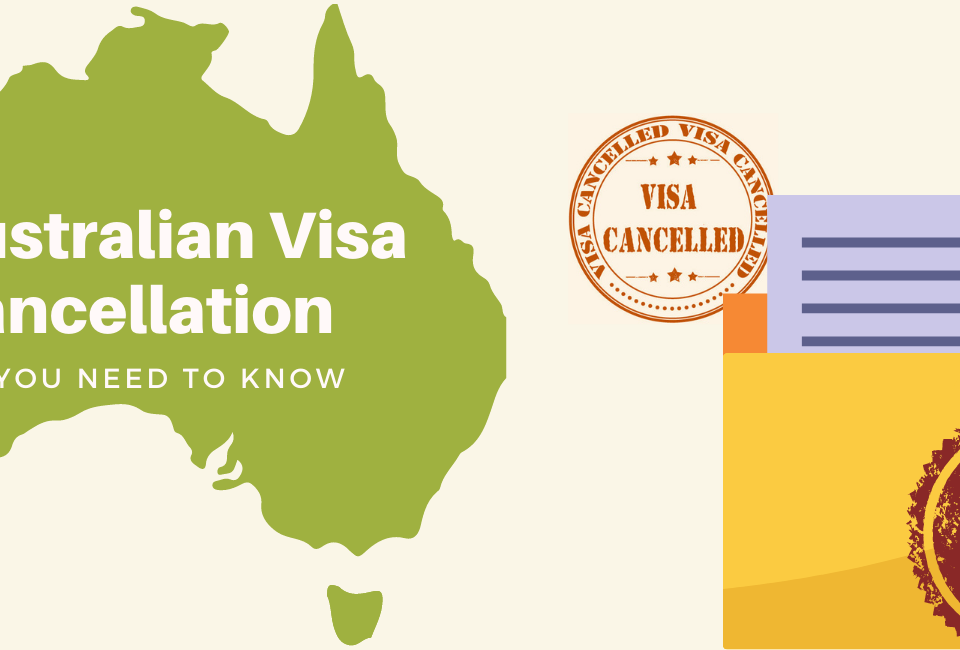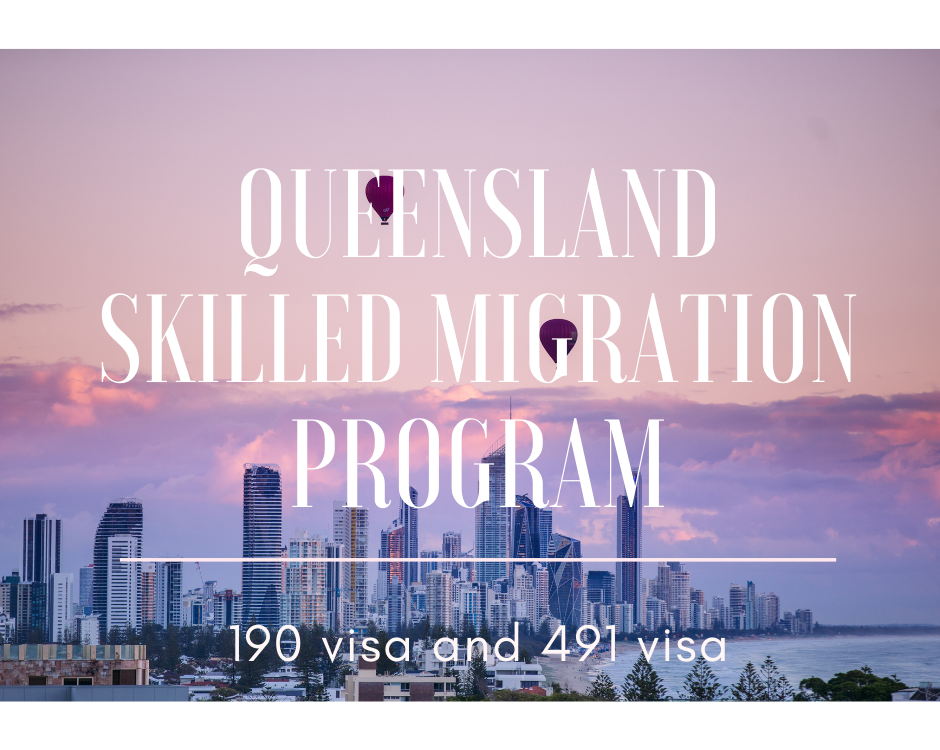Pathway to PR: Subclass 482 TSS Visa to Permanent Residency in Australia

FROM A TSS VISA (482) TO PERMANENT RESIDENCY (PR)
In March 2018, subclass 482 Temporary Skill Shortage (TSS) visa replaced the 457 employer sponsored visa. The Temporary Skills Shortage Visa (TSS Visa Australia) has been structured to reduce the number of people transitioning from a Temporary employer-sponsored visa to full Australian Permanent Residency and/or Australian Citizenship, while meeting the needs of Australian employers to attract international talent.
The 482 TSS visa is a temporary work visa that allows the holder to live in Australia while working full-time for the sponsoring employer. The visa holder must be working in an occupation listed on the Short Skilled List or Medium Long Term Skilled List.
The 482 TSS visa is the standard option for those who choose to work temporarily (up to 4 years) in Australia.
In this blog, we look at ways to switch from Temporary 482 visa sponsorship to permanent residency in Australia.
The 3 Streams of the 482 TSS Visa
The TSS visa has 3 streams – the medium-term stream, the short-term stream, and the labor agreement stream.
The medium-term stream is accessible in the Medium and Long-Term Strategic Skills List (MLTSSL) or the Regional Occupancy List (ROL) for sponsored employees with jobs.
If your occupation is not on these lists, but is on the Skilled Occupation Short-Term List (STSOL), then you can only get a short-term TSS Visa.
The labour agreement stream is the least used and is only available if your employer has signed a labor agreement with the Department. Many collective contracts provide the ability to appoint positions on the STSOL for PR through a 186 form.
Depending on which visa flow you are in, the choices to switch from TSS visa to PR will be different. For each flow below, we describe the options available. Test your visa grant notice if you are unsure what flow you are in.
Medium-Term TSS Visa to Permanent Residency
For those with an MLTSSL occupation, the Employer Nomination Scheme (186) visa is the most common route to permanent residency. You can pass through the Transitional flow from the TSS to the 186 visa.
Applying for the 186 will require you to meet the following:
• Nomination by an approved Australian employer
• You have worked for your employer full-time and in the same position that they are sponsoring you for in Australia, for at least 3 out of the previous 4 years.
• You are under 45 years of age (limited exceptions can apply to this)
• You have at least competent English
• You have the required skills and qualifications for the position you have been nominated for
• You meet the health and character requirements
• You can apply for the 186 visa while you are still on your TSS visa. If your visa expires after you lodge your application, you will be placed on a bridging visa until your 186 visa application is assessed. Once your 186 visa is granted, you will become a permanent resident of Australia.
EMPLOYER SPONSOR ON A TSS VISA
An employer must become an ‘ approved business sponsor ‘ to sponsor an employee. In Australia, the company must operate legally and meet certain requirements. When approved, there is a five-year sponsorship and other applicants can be sponsored on this type of visa.
From a Short-Term TSS Visa to Permanent Residency
It can be difficult to move from a short-term TSS visa to a permanent residency. If you obtained your TSS visa in this flow, you will not be able to move to a 186 visa unless you change to a MLTSSL-listed one.
Regional Sponsored Migration Scheme (187) visa
Several STSOL professions are on the RSMS list, which opens a pathway to PR through being sponsored by an employer in regional Australia.
Skilled Nominated (190) visa
You may be able to apply for a Skilled Nominated (190) visa depending on your profession. The 190 is focused on points as a skilled independent visa, so you won’t need employer support. Alternatively, you are looking for a state or territory to appoint. Your probability of being nominated depends on a number of factors, including your employment, expertise, credentials, and work experience, and where you are applying.
Family Stream visa
If you do not meet the work visa requirements, you may be eligible to apply for a family flow visa depending on the circumstances of your life. Definitions include whether you’re married to or in a de facto relationship with an Australian citizen or permanent resident, or whether you’re the parent of an Australian citizen.
What are caveats?
The 482 occupations with associated visa are subject to caveats. For example, the government might require that a nominee nominated in a particular role must be supported by a company that has demonstrated a turn over of at least $1 million in the past 12 months (prior to the nomination).
Other examples of visa caveats include:
• Applicant must be paid a higher minimum salary than applies to most TSS visas (e.g. $65,000 or $80,000)
• Nominated position must not include low skill tasks
• Sponsor must be located in a specific postcode
• Sponsor must have at least five full-time employee
Are there any exemptions from sitting an English test?
You must have Competent English (at least 6.0 in all parts of IELTS or an equivalent test score, unless you are exempt).
You are exempt from the English test if you hold a passport from the UK, Ireland, USA, Canada or New Zealand or you can show that you have completed 5 years of education (at the secondary and/or tertiary level) where the instruction was delivered in English.
NEW AMENDMENTS FOR TSS TO PR IN 2020
Through the Transitional (TRT) Stream medium-term TSS visa holders employed with the same employer in Australia for 3 years may be able to apply for permanent residency. TSS visa holders must apply via either the Employer Nominated Scheme (186 ENS) or the Regional Employer Sponsored Scheme (187 RSMS) depending on their postcode being regional or Metropolitan Australia. Under the Temporary Residence Transfer process, the employer must be willing to sponsor the applicant for permanent residency and must send a legitimate nomination to the Department of Home Affairs (previously the Immigration Department).
Finding a pathway to Permanent Residency can require some strategic planning for many. If you need assistance, contact our immigration experts to discuss your case.
HAVE QUESTIONS?
Contact us on hello@pathmigration.com for an assessment and advice on your
options for migrating to Australia.
OR
Book a Consultation now! You can book a consultation with our Australian Immigration lawyer.
We are always happy to help!
NOTE: The information provided in this blog can not be construed as “legal advice”. You should
not act based on the information provided here. If you are uncertain about your options or would like to seek personalized recommendations, you can contact us or book a consultation.
Migration law is complex and changes very frequently, while we ensure our content is accurate,
we can not vouch for how concurrent it is. To clarify any of your doubts call us on +61 2 88158135



